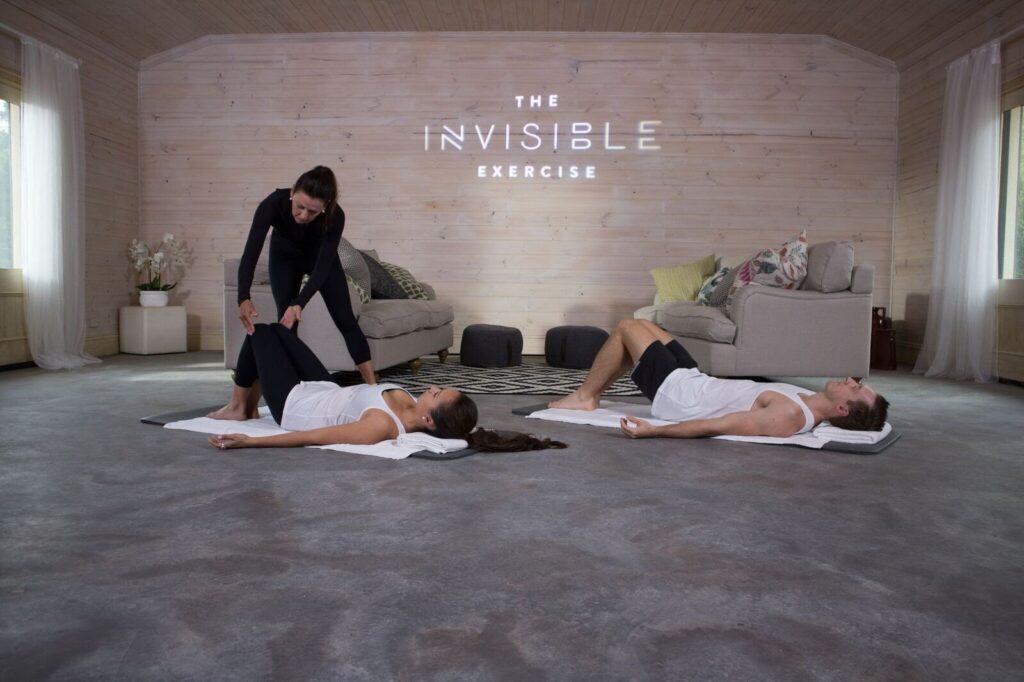What are some anterior pelvic tilt causes? What are some anterior pelvic tile exercises? Out posture is key, and our posture describes our skeletal alignment. Anterior pelvic tilt is a common skeletal misalignment of the lower body and is one of the most common postural issues that can cause back and neck pain. The common name of an anterior pelvic tilt is a swayback. A swayback draws the centre of gravity forward. As the bones of the lower body move forward and away from the correct anatomical position the distance from the back of the waist to the base of the spine shortens and this compresses the back of the 5 lumbar vertebrae.
A swayback, or anterior tilt, is much more common in women than men. Men typically suffer from the opposite, which is a posterior tilt. A posterior tilt sees the bottom sliding down the legs as the lumbar spine flattens out drawing the centre of gravity backward. This compresses the front of the 5 lumbar vertebra.

Either way, when the bones of the pelvis and spine are moving forward or backward, our posture, body shape, and joints suffer. That is why I have developed TIE – to realign the body achieving great posture, overcoming anterior or posterior pelvic tilts and all the aches, pains, injuries, wear, tear and compression that result. Our Introduction to TIE Program, and Monthly Membership Program (click to learn more) – will guide you through simple powerful postures that ensure you achieve an aligned, well-moving, toned body.
What is an anterior pelvic tilt?

Instead of the spine and pelvis being aligned correctly, these bones roll forward of where they are meant to be. The pubic bone and hip bones (ASIS) are meant to be on the same plane which ensures the SIJ, Symphysis Pubis, and lumbar spine are also aligned correctly.
An anterior tilt sees the hip bones move forward of the pubic bone and this adversely pulls the lumbar spine forward, shortening and compressing the back of the spine.
Anterior Pelvic Tilt Causes?

The most common cause of a swayback is muscle imbalance and the biggest culprit is the hip flexor. Having struggled with a sway back all my life before TIE (having inherited one just like my mother’s), I observed that the more running and training I did the more my hip flexor tightened pulling my pelvis forward. The more my pelvis rolled forward, the more my upper body tried to compensate. I was very fit and could run long distances, but the cost to my alignment, posture, and joint health mounted.
That is one of the reasons I developed TIE, to realign my body and finally achieve a healthy hip flexor and muscle balance eliminating my anterior tilt.
Now in my work, I come across the same issues every day for my clients. Predominantly women who no matter how much they run, cycle, cross-train, core, or stretch, their sway back never really improves. (neither does their back pain!)
For men, no matter how much they squat, run, cycle or stretch, their posterior tilt just keeps getting worse pulling their pelvis backwards so their bottom disappears. I know this blog is about anterior tilt but I just can’t resist including everyone!
How do I know if I have anterior pelvic tilt?

If you have an anterior tilt you usually know because your lower back will likely feel tight and short. Your lower abdominals nearly always protrude and your bottom feels and looks bigger than it actually is. (It is an optical illusion but that’s how it is.) It is also difficult to tone the top back of your leg as these muscles simply do less and less.
You may develop aches and pains around your neck and upper back as these muscles work hard trying to keep you up as your centre of gravity is being drawn forward.
Often your lower ribs protrude as your neck and shoulder muscles get tighter.
Generally, your skeletal alignment, body shape, posture and proportions suffer.
How do I stop my anterior pelvic tilt?
My advice is to do TIE via our Introduction to TIE program. There is danger in applying exercise effort, whatever that may be, running, cycling, stretching, ‘coring’ to a pelvis, and lumbar spine that is not aligned correctly prior to exercising.
TIE realigns your body before you move. This ensures any exercise you do is safe and much more effective preventing muscle imbalance, compression of your joints, and problems such as an anterior (or posterior) tilt.

